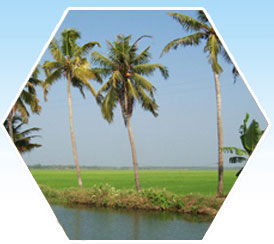 |
 |
 |
| |
|
 |
|
SWAGATH INDIA DESTINATIONS ! |
|
|
|
|
 |
|
 |
|
 |
|
 |
|
 |
|
 |
|
 |
|
 |
|
 |
|
 |
|
 |
|
 |
|
 |
|
 |
|
 |
|
| |
| |
|
 |
|
KERALA ATTRACTIONS ! |
|
|
|
|
 |
|
 |
|
 |
|
 |
|
 |
|
 |
|
 |
|
| |
| |
|
 |
|
KERALA GENERAL ! |
|
|
|
|
 |
|
 |
|
 |
|
 |
|
 |
|
 |
|
 |
|
 |
| |
|
|
 |
|
| |
The first recorded history of Kerala appears in the inscriptions of the Mauryan Emperor, Ashoka (269-232 b.c.).In these inscriptions, Ashoka refers to four independent kingdoms that lay to the south of his empire. These were the kingdoms of the Cholas, the Pandyas, the Keralaputrasand the Satiyaputras.Among them, the Keralaputras or the Cheras, as they were called, reigned over Malabar, Cochin and North Travancore – all part of present-day Kerala. They managed to maintain their independence because they were on good terms with the Great Maurya. Otherwise, Ashoka, who was a great empire builder, would surely have attempted to bring these kingdoms under his tutelage |
|
| The Sangam Age |
|
Information about the Cheras during the Mauryan times is very scarce. It is only in the Sangam Age that the history of Kerala emerges from myths and legends. The Sangam Age refers to the period during which Sangam literature was composed. Sangam literally means academy and these great works in Tamil were written in the first four centuries of the Christian era. Tradition has it that the first three academies met at Madurai and were attended by kings and poets. However, the literature composed at the First Sangam is no longer extant |
| |
 |
| |
| Mythological Background |
|
Parasurama - founder of Keralam Parasurama, the short-tempered warrior-sage regarded as the incarnation of Vishnu. After defeating the Kshathriya Kings, the sage approached the wise men for penance. As a Self-mortification he was advised to create a land for Brahmins. He readily agreed and meditated at Gokarnam, (considered to be the end of land). After getting the booms from Varuna, the God of the Oceans and Bhumidevi, the Goddess of earth, he proceeded to Kanya Kumari (Cape Comorin) and threw his battle-axe northwards across the waters. The waters subsided and what was left over was called the land of Parasurama, that is today's Kerala |
| |
| Scientific Theology |
|
Geologists have pointed out that the elevation of Kerala from the sea was the result of some seismic activity, either suddenly or gradually. Another Thoughts prevailing in scientific society is the rivers of Kerala emptying into the Arabian seas bring down enormous quantities of silt from the hills. The ocean currents transport quantities of sand towards the shore. The coastal portions could well be due to the accumulation of this silt over thousands of years |
| |
 |
| |
| The Growth of the National Movement |
|
There was no dearth of patriotic fervour amongst the people of Kerala when India was going through the struggle for independence.Malabar was a centre of political agitation from the inception of the national movement. Many stalwarts of the Indian National Congress were from Malabar. The Non-Cooperation Movement and the Khilafat agitation found enthusiastic supporters in Malabar too. Mahatma Gandhi spearheaded the Salt Satyagraha of 1930 and the Civil Disobedience movement of 1932. These popular uprisings found an echo in Malabar too. The Muslim League also had a branch here, though it became a force to reckon with only in 1934. Abdul Rahman Ali Raja of Cannanore became the President of the Muslim League in 1937. The Communist Party found a foothold in Kerala around 1939 |
| |
The winds of patriotism swept through the princely states of Travancore and Cochin during the freedom struggle.Travancore had a long history of popular uprisings, the earliest of which was led by Velu Thampi in 1799. The Malayali Memorial signed in 1891, which chronicled the grievances of the local populace, raised the political consciousness of the people. Likewise, the Ezhava Memorial of 1896 was a petition that spelt out the injustices the Ezhava community had suffered for a long time. The Indian National Congress established a Congress Committee in Thiruvananthapuram. Travancore remained in a state of political unrest for many years |
| |
Cochin also remained in the eye of the storm for several years during the national movement. The people of Cochin participated in several uprisings like the Electricity agitation, the agitation for a responsible government, to name a few. A committee of the Indian National Congress was set up in Cochin too |
|
|
|
|
|
|
|
 |